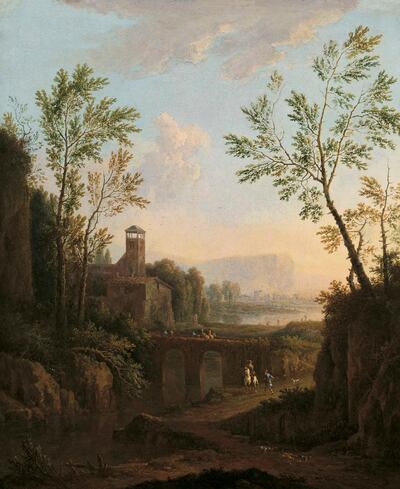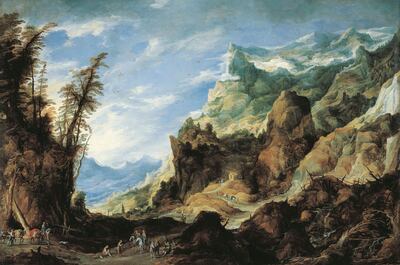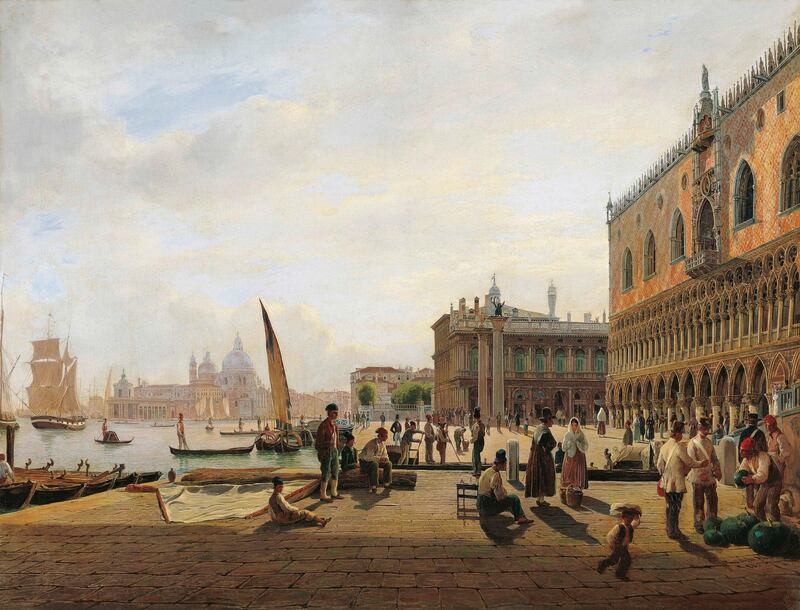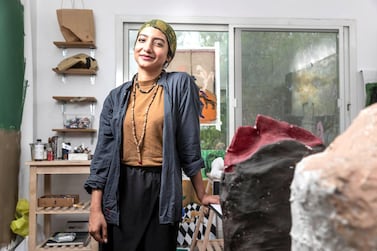It's Old Master season in the capital. Louvre Abu Dhabi has just opened its starry show of portraits from the Dutch painters of the 17th century. Just over the road, Manarat Al Saadiyat is following suit with an expansive, illuminating exhibition about landscapes in the European tradition.
The exhibition is divided into six sections that broadly sketch how landscape has been depicted, from its most famous appearances – the mountainous vistas by which German artists explored the sublime and the flat Dutch landscapes by which the genre formally came into its own – to other appearances of the land, such as the background to Renaissance religious paintings or the hunting scenes by which aristocracy chronicled its diversions. Some give sweet details of life at the time, with farmers pushing carts and children at play; in others, intricately rendered flora and fauna suggest the richness of life without people.
The exhibition comes from the vast collections of the Princely Family of Liechtenstein, who began collecting at the Austro-Hungarian court in 1605 and, with a few exceptions, have not stopped since. Some of their castles in Moravia, in the eastern Czech Republic, were appropriated by the communists after the Second World War, and they had to sell off some of their work in the post-War period, but they are now acquiring again. On show here is just a "thumbnail" of what the Princely Family owns, as Johann Kraftner, the erudite and affable director of the foundation, puts it.
The breadth of the collection means that this show, Distant Prospects – European Landscape Paintings from Liechtenstein, provides a condensed tour through European art history from the 14th century to the 19th century. Moreover, because the collection has been put together by a single family over generations, it contains extraordinary archives and anecdotal information about the paintings, bringing to the fore the realities of art production and patronage: economic motivations, personal preferences, surprise coincidences. Kraftner, who has been at the collection since 2002, when he was commissioned to redesign one of their palaces, rolls off stories about the artists as if speaking about extended members of a family, as bemused by their mistakes as proud of their genius. Rather than art on a pedestal, this is art that appears humanised, part of life.
The show opens with the Biblical scenes that were still the main subject of painting in Europe in the 14th and 15th centuries. “You can see what they thought were desert landscapes,” says Kraftner, pointing out some earthy rocks and palm trees that have been incongruously added to a verdant northern landscape. “This shows St Christopher carrying Christ, with European villages and a market in the background. The [Italian] painter depicted the surroundings he knew.”

The religious scenes quickly give way to the highlight of the exhibition, the period when the Dutch began painting the land as a subject in itself, and which comprises the bulk of this exhibition, including works by Rubens. “Rubens never sold his landscapes,” Kraftner explains. “He was a very wealthy painter – he was working also as a diplomat – and besides his town house in Antwerp, he had a little estate in the countryside where he would paint his landscapes. They came to the market only in 1640, after he passed away. Before, when someone wanted to have a landscape by Rubens, he could only buy a little print, an etching that Rubens would oversee the making of.”
The Liechtenstein family has some of the Rubens landscapes, but they are installed in situ in the palaces and are unable to easily travel. Here, in addition to some oil sketches, the exhibition contains the etchings that Rubens authorised for sale in his lifetime, with gorgeous vignettes like laundry spread out to bleach on the grass in the sun.
Kraftner notes that after the collapse of the tulip market, in 1637, Dutch painters had to go abroad to make a living. Italian details start showing up in the formerly flat landscapes, courtesy of those who went south, while others went to Prague, where Charles, the first prince of the Liechtenstein family, was installed in the court of the Austro-Hungarian emperor, Rudolf II. It was Charles who began commissioning artwork for the emperor. When Rudolf II died, his successor had very little interest in art, and much of the painting that Charles commissioned became the origin of the Liechtenstein collection.

Indeed, the Liechtenstein princes have become a part of art history, and their story is also visible in this exhibition. A 19th-century painting, for example, depicts a hunting lodge still owned by the Liechtenstein family. It was built first as a Renaissance castle and then deliberately transformed during the Romantic era into a ruin by the Austrian architect Joseph Hartmut, who was – wait for it – the inventor of the wood-and-graphite pencil.
Today, the Princely Collection of Liechtenstein is mostly housed in two palaces in Vienna, where the family had their seat until the Second World War. "Liechtenstein itself was just rural then, just countryside," Kraftner explains. The family moved to the small Alpine seat in 1938, before the Nazi invasion of Austria, but the bulk of the collection remains there, open to the public when it is not on tour. It has come to the UAE capital as part of the Abu Dhabi Festival, the yearly programme of art and classical music organised by the Abu Dhabi Music and Arts Foundation (Admaf).
The overlap with the Louvre Abu Dhabi exhibition is incidental, though the two organisations will collaborate on a symposium about Old Master painting, with Kraftner, Louvre Abu Dhabi director Manuel Rabate and others on stage.
Admaf also worked with the Princely Family on a residency for five young Emirati artists, Taqwa Al Naqbi, Aisha Juma, Hamdan Buti Al Shamsi, Asma Khoory and Maitha Abdalla, who travelled last year to see the collection in Austria and will make work inspired by the trip.
A short video at the exhibition recalls this excursion, and beyond that the vista of European painting. This is a tough show to get through if you are in a hurry, but if you stay to look closely at the stories within the paintings, it’s a slice of life you won’t see elsewhere.
Distant Prospects – European Landscape Paintings from Liechtenstein, organised by Admaf, is at Manarat Al Saadiyat until March 25







